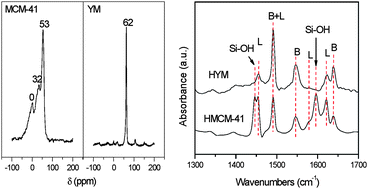Highly acidic mesoporous aluminosilicates prepared from preformed HYzeolite in Na2SiO3 alkaline buffer system
Abstract
Mesoporous aluminosilicates (

* Corresponding authors
a
Department of Catalysis, State Key Laboratory of Fine Chemicals, Dalian University of Technology, 158 Zhongshan Road, Dalian, P.R. China
E-mail:
ajwang@dlut.edu.cn
Fax: +86 41139893906
Tel: +86 41139893906
b Liaoning Key Laboratory of Petrochemical Technology and Equipment, Dalian University of Technology, 158 Zhongshan Road, Dalian, China
Mesoporous aluminosilicates (

 Please wait while we load your content...
Something went wrong. Try again?
Please wait while we load your content...
Something went wrong. Try again?
L. Wang, A. Wang, X. Li, F. Zhou and Y. Hu, J. Mater. Chem., 2010, 20, 2232 DOI: 10.1039/B919842C
To request permission to reproduce material from this article, please go to the Copyright Clearance Center request page.
If you are an author contributing to an RSC publication, you do not need to request permission provided correct acknowledgement is given.
If you are the author of this article, you do not need to request permission to reproduce figures and diagrams provided correct acknowledgement is given. If you want to reproduce the whole article in a third-party publication (excluding your thesis/dissertation for which permission is not required) please go to the Copyright Clearance Center request page.
Read more about how to correctly acknowledge RSC content.
 Fetching data from CrossRef.
Fetching data from CrossRef.
This may take some time to load.
Loading related content
